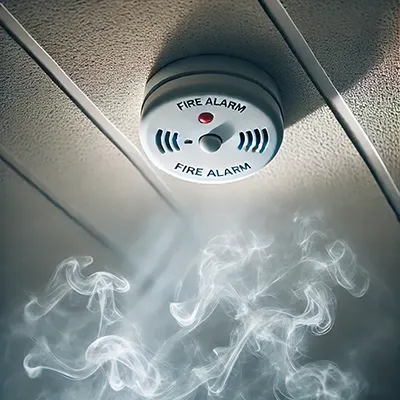Smart Smoke Alarms
The Vital Role of Smoke Alarms
Smoke alarms are essential for any building because they provide an early warning system in the event of a fire, potentially saving lives and reducing property damage. Fires can spread rapidly, often leaving little time for occupants to react. Smoke alarms detect the presence of smoke, a key indicator of fire, and sound an alarm that alerts everyone in the building to the danger. This early detection is crucial, especially during the night when people are asleep and may not be aware of a fire developing.
By giving occupants the critical time needed to evacuate or respond to the fire, smoke alarms significantly increase the chances of survival and help prevent injuries. Additionally, they enable quicker responses from emergency services, which can minimise the extent of damage to the building and its contents. In short, smoke alarms are a vital component of building safety, offering a first line of defence against the devastating effects of fire.
Why Choose Our Smoke Alarms?
Our smoke alarms feature long-lasting batteries with a lifespan of 5-10 years, significantly reducing the need for frequent battery replacements and ensuring continuous protection for an extended period. Many of our smoke alarms offer more than just fire detection; they also include temperature and humidity sensors, providing valuable insights into your home’s environment and enhancing overall safety and comfort. Smoke Alarms are an essential part of













